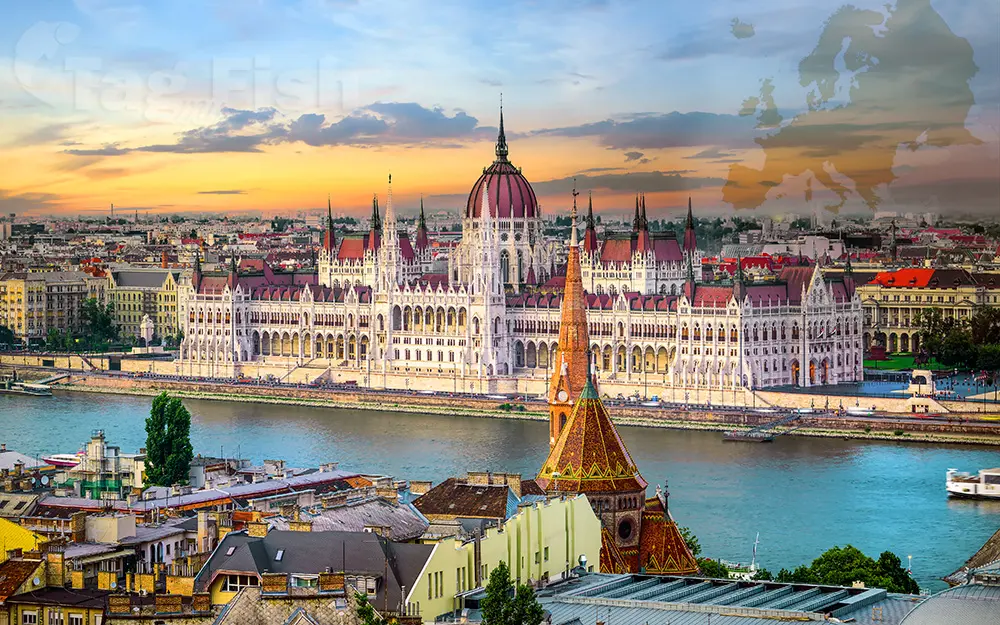Europe

General data
- Name: Europe
- Countries: Albania, Andorra, Austria, Azerbaijan, Belarus, Belgium, Bosnia and Herzegovina, Bulgaria, Croatia, Czech Republic, Denmark, Estonia, Faroe Islands, Finland, France, Germany, Gibraltar, Greece, Guernsey, Hungary, Iceland, Republic of Ireland, Isle Of Man, Italy, Jersey, Kazakhstan, Latvia, Lithuania, Luxembourg, North Macedonia, Malta, Moldova, Monaco, Montenegro, Netherlands, Norway, Poland, Portugal, Romania, Russia, San Marino, Serbia, Slovakia, Slovenia, Spain, Sweden, Switzerland, Turkey, Ukraine, Northern Ireland (UK), Azores (Portugal), Wales (UK), Scotland (UK), England (UK)
Europe is traditionally defined as one of seven continents. Physiographically, it is the northwestern peninsula of the larger landmass known as Eurasia (or the larger Afro-Eurasia); Asia occupies the eastern bulk of this continuous landmass and all share a common continental shelf. Тхе eastern frontier оф Еуропе is delineated by the Ural Mountains in Russia, which is the largest country by land area in the continent. The southeast boundary with Asia is not universally defined, but the modern definition is generally the Ural River or, less commonly, the Emba River. The boundary continues to the Caspian Sea, the crest of the Caucasus Mountains (or, less commonly, the river Kura in the Caucasus), and on to the Black Sea. The Bosporus, the Sea of Marmara, and the Dardanelles conclude the Asian boundary. The Mediterranean Sea to the south separates Europe from Africa. The western boundary is the Atlantic Ocean. Iceland, though on the Mid-Atlantic Ridge and nearer to Greenland (North America) than Mainland Europe, is generally included in Europe for cultural reasons and because it is over twice as close to mainland Europe as mainland North America. There is an ongoing debate on where the geographical center of Europe falls. The most important rivers in Europe are Danube, Volga, Rhine, Elbe, Oder and Dnieper. European rivers by length The longest rivers in Europe, directly flowing into the World Ocean or Endorheic basins, with their approximate lengths:
- Volga - 3,690 km (2,290 mi)
- Danube - 2,860 km (1,780 mi)
- Ural - 2,428 km (1,509 mi)
- Dnieper - 2,290 km (1,420 mi)
- Don - 1,950 km (1,210 mi)
- Pechora - 1,809 km (1,124 mi)
- Kama - 1,805 km (1,122 mi)
- Oka - 1,500 km (930 mi)
- Dniester - 1,352 km (840 mi)
- Rhine - 1,236 km (768 mi)
- Volga - 8,087 m³/s (largest river in Eastern Europe)
- Danube - 6,450 m³/s (largest river in Central Europe)
- Pechora - 4,380m³/s
- Northern Dvina - 3,330m³/s
- Neva - 2,490 m³/s
- Rhine - 2,315 m³/s) (largest river in Western Europe)
- Rhône - 1,900 m³/s (largest river in France)
- Dnieper - 1,700 m³/s
- Po - 1,460 m³/s (largest river in Italy)
- Vistula - 1,080 m³/s (largest river in Poland)

 English
English
 Spanish
Spanish
 German
German
 French
French
 Serbian
Serbian
 Russian
Russian

